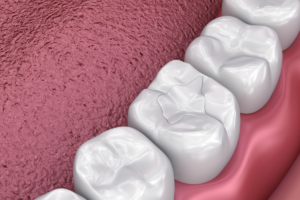A dental implant procedure may be vague or even scary for many who are not big fans of dental surgeries. However, if you know the process, you will better understand how well your doctor is performing the procedure. So, in this article, we have created a step-by-step for the dental implant process. Lay back and enjoy it. It’s not that scary.
Understanding Dental Implants

Implants are zirconia or titanium screws inserted into your jawbone to act as a natural tooth. Holistic dentists recommend a zirconia implant as it is a safer and healthier option since it doesn’t contain any metal (especially mercury) and doesn’t bleed into your gum, causing many health problems.
Preparatory Steps
Before starting your dental implant, you must take specific preparatory steps. These steps include:
Consider If You Are a Good Candidate for It
If you have a missing tooth, need denture support, or experience jawbone loss, you are probably considering an implant. But how do you know if you are a good candidate? Here are the criteria you can consider:
- You don’t have active gum disease
- You have enough jawbone for an implant
- You are not a heavy smoker
- You don’t have severe health conditions such as diabetes or cancer
Choose a Holistic Doctor
If you consider yourself a good candidate, now you need to look for a qualified doctor. It would be best if you found a trustworthy, experienced, holistic dentist. In “Nine Important Facts about Dental Implants,” we mention factors you must check before deciding about the dental office. Some of these factors include:
- Are they experienced enough?
- Are they using the latest technologies?
- Do they offer metal-free zirconia dental implants?
- Where is their lab?
- How is the payment plan?
What Is the Dental Implant Procedure?

Your qualified dentist should walk you through the steps of this procedure as it might have differences for each individual. But here are the general steps for a dental implant procedure:
Initial Consultation
After choosing the dental office, you should consult the dentist about your dental and medical history to ensure this treatment works for you and you won’t have a dental implant failure. Failure happens when there is a micromovement or poor placement of the implant. In another article, we discuss “How to Deal with Implant Failure” if it should happen.
Treatment Planning
Next, your doctor plans your treatment by going through your medical background and taking dental X-rays of your jaw and the area where you want an implant. You might also need a CT scan so your doctor can better understand your jawbone and locate your sinuses and nerves. If your jawbone doesn’t have enough capacity for an implant, you might need a bone graft.
Bone Grafting

Your doctor might suggest bone grafting if your jawbone doesn’t have enough space for an implant. The process usually involves adding bone to your jawbone for a better result. This bone can be from your body, a donor’s body, or artificial. If you need bone grafting, it might postpone your dental implant steps up to twelve months.
The Surgical Procedure
The dental implant procedure consists of four steps and a six-month break to let your gum heal. Here are the steps:
Anesthesia
Holistic dental offices offer various options for dental implant procedures, but nitrous oxide and I.V. sedation are great choices based on your individual treatment plan. Remember to arrange for your transportation before and after your procedure because you won’t be able to drive under the influence of the anesthesia.
Incision
First, your dentist needs to make an incision to reach the empty tooth socket. This incision is the entry point to the jawbone and the implant’s placement.
Implantation
Next, your doctor will drill down the jawbone to place the implant in your jaw. When it’s done, the incision is stitched, and your session is finished. You are recommended to go home and let your jaw heal.
Osseointegration
Osseointegration happens when the implant is a part of your jawbone as it grows around the implant and insecure it for good. If osseointegration doesn’t occur successfully, your implant will fail since it has micro-movements. So, it would be best to give your jaw the time it needs to form around the implant.
Healing Cap
After three to six months, you will have another appointment with your doctor to place a healing cap on the implant. This will help your gum tissues heal faster. After a few weeks, your doctor will remove the cap when its job is done.
Abutment and Crown Placement
After removing the healing cap, an abutment is placed to support the crown of the implant. These abutments have a significant role in your success of implantation, and it is necessary you choose a zirconia one. Ultimately, the crown is placed on the abutment, and you can bite anything you want.
Long-Term Maintenance
After your implant procedure, you have to take care of it like a natural tooth. It needs the same attention as your other teeth need. So, brush them twice daily and see your dentist twice yearly to ensure you won’t have any peri-implant disease and avoid implant failure.
One-Stage Dental Implant Process
There is also a one-stage implant procedure that is not available for everybody. But if your dentist suggests it, you can skip the six-month wait for healing. For this type of procedure, you get the implant, abutment, and a temporary crown in one session.
Ready for Your Implant Journey?
Now that you’ve gained insight into the dental implant procedure, it’s time to take the next step. Are you in search of a trusted holistic dentist to guide you on this path to a new smile? Look no further than Aria Dental, located in Orange County, where we offer zirconia dental implants along with a range of biological and integrative services.
Don’t hesitate to reach out to us for a consultation, and let us help you achieve your dream smile with confidence.

FAQ
Most Frequently Asked Questions
No, if you are adequately anesthetized and follow post-op instructions.
With proper oral hygiene such as regular brushing and flossing, they can last for a lifetime.
You can clean them just like a natural tooth. Daily brushing and flossing is enough.
Dental implants that do not require lifting the gum tissue are actually painless.


















